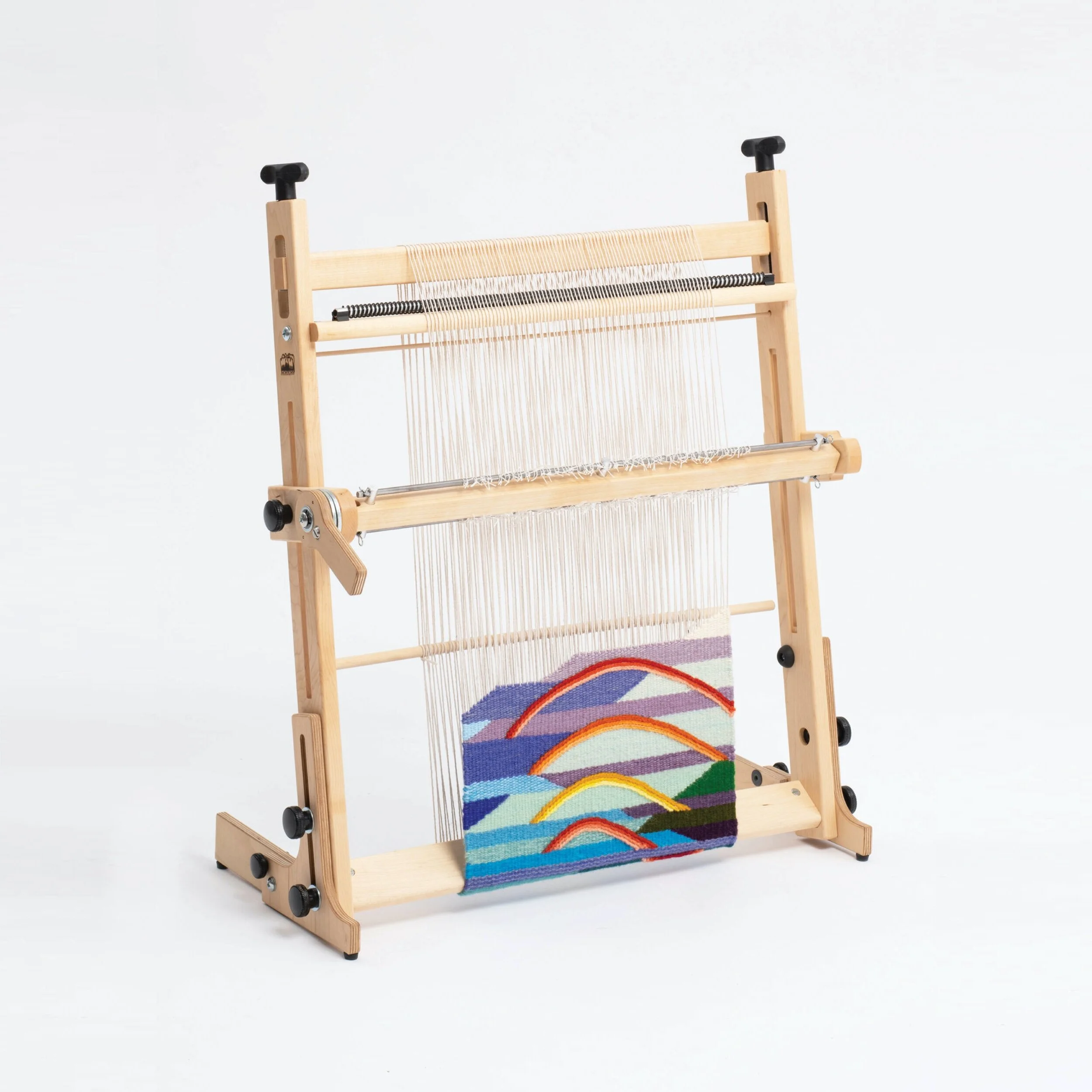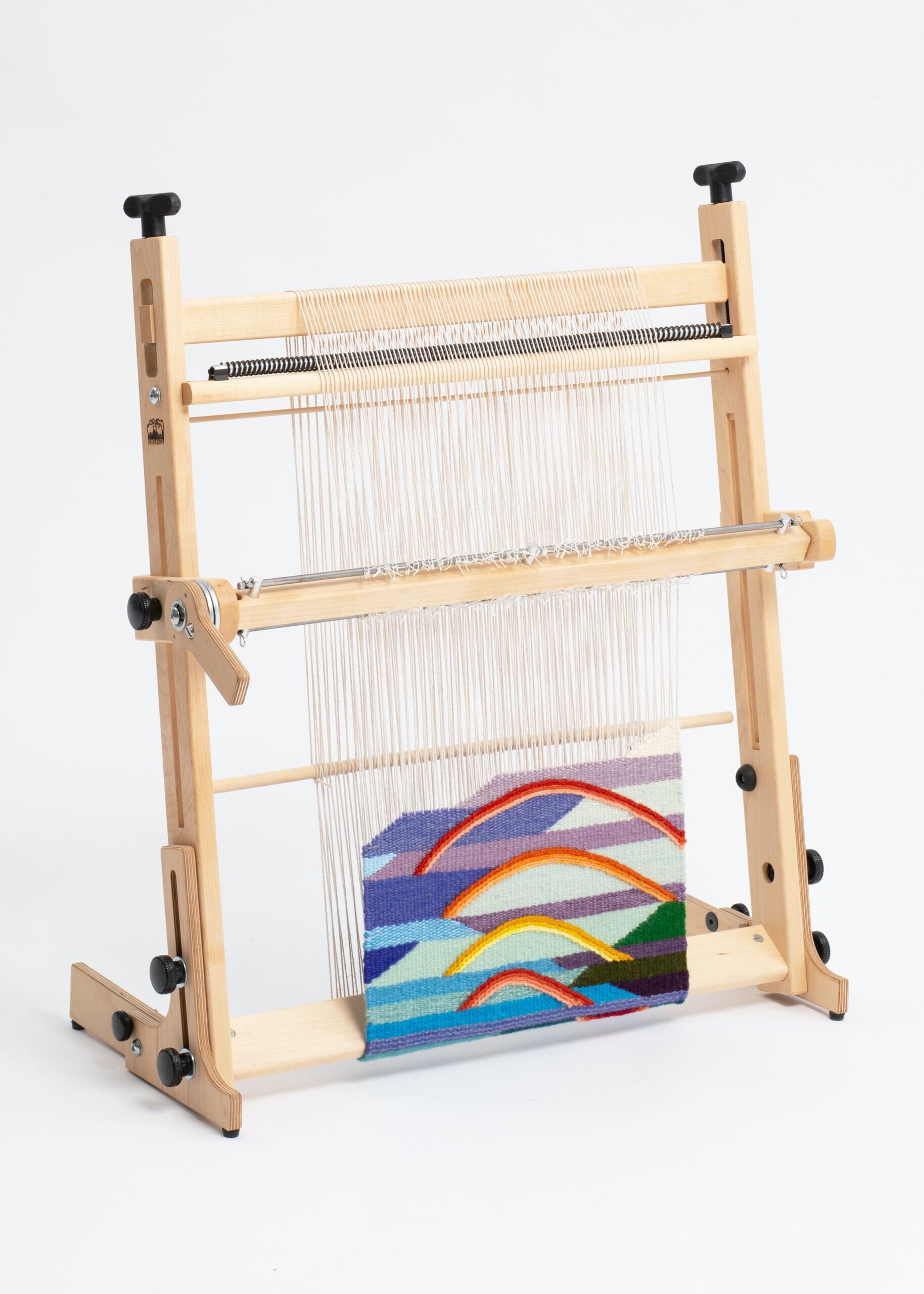We’re so pleased to share the latest edition to the Schacht tapestry loom line-up - the Arras Tapestry Loom.
Schacht have taken a classic loom design with all the conventional elements of traditional tapestry weaving and applied a modern design aesthetic and innovative technologies to produce a functional and ergonomic loom fit for today’s weaver.
Starting with a base of hard-wearing maple timber, the solid construction will endure high tension warps typical to tapestry weaving, warp after warp.
Built for comfort the loom is loaded with adjustable features to aid warping and weaving, plus ergonomic handles and grips for fine tuning.
A generous warp width, mechanical shedding device, colour-coded warp guides and cartoon holder provide endless possibility for when inspiration strikes.
The Arras Tapestry Loom is a serious but user-friendly upright tapestry loom with all the bells and whistles that will no doubt suit both the passionate tapestry weaver and the beginner with optimistic enthusiasm.
FEATURES YOU’LL LOVE
Durable and hard-wearing maple construction guaranteed to withstand the rigours of high-tension tapestry warps.
A generous weaving width of 50.8cm (20'') and warp length of 114cm (45'') using the continuous warping method. Its modular design will allow for a future upgrade that will include a beam kit with ratcheted cloth and warp beams.
The loom can be warped in a horizontal or vertical position, improving your efficiency and comfort while direct warping.
Both loom height and weaving angle can be adjusted to suit your working conditions ensuring optimal comfort.
Precise controls with ergonomic hand grips for fine tuning warp tension.
A Smooth-working, hand-controlled shedding device that can be adjusted vertically to suit your working height. Conveniently, the hand lever can be installed on the either the right or left side of the loom.
Includes four warp guides fixed at 4, 5, 6, and 8 dents per inch. Warps can also be doubled in the dents increasing the sett range to 10, 12 and 16 ends per inch.
A handy cartoon holder that snaps into place below the warp guide.
At 4.6kg (10lbs) the loom is portable, folding support legs make it convenient for travel or storage.
OUR THOUGHTS
We think Schacht have really out done themselves here in terms of their thoughtful design and overall functionality of the working loom.
With so many great features we encourage you to check out the product specifications and inclusions.
We think this will be an exceptional and long-lasting tapestry weaving loom for weavers of all skill level.
We look forward to the official release in April 2020.
The Arras Tapestry Loom is available for pre-order now!



























































































































